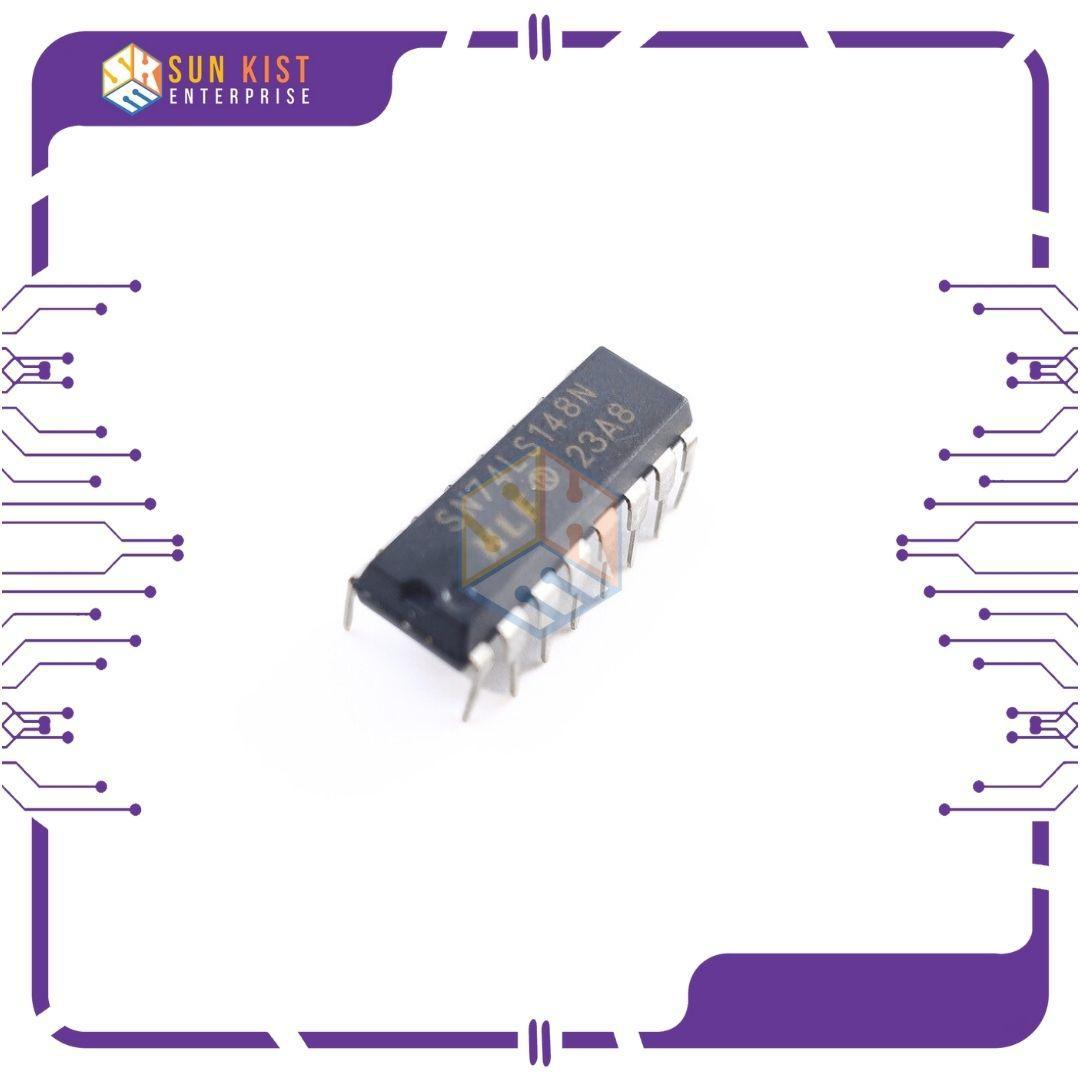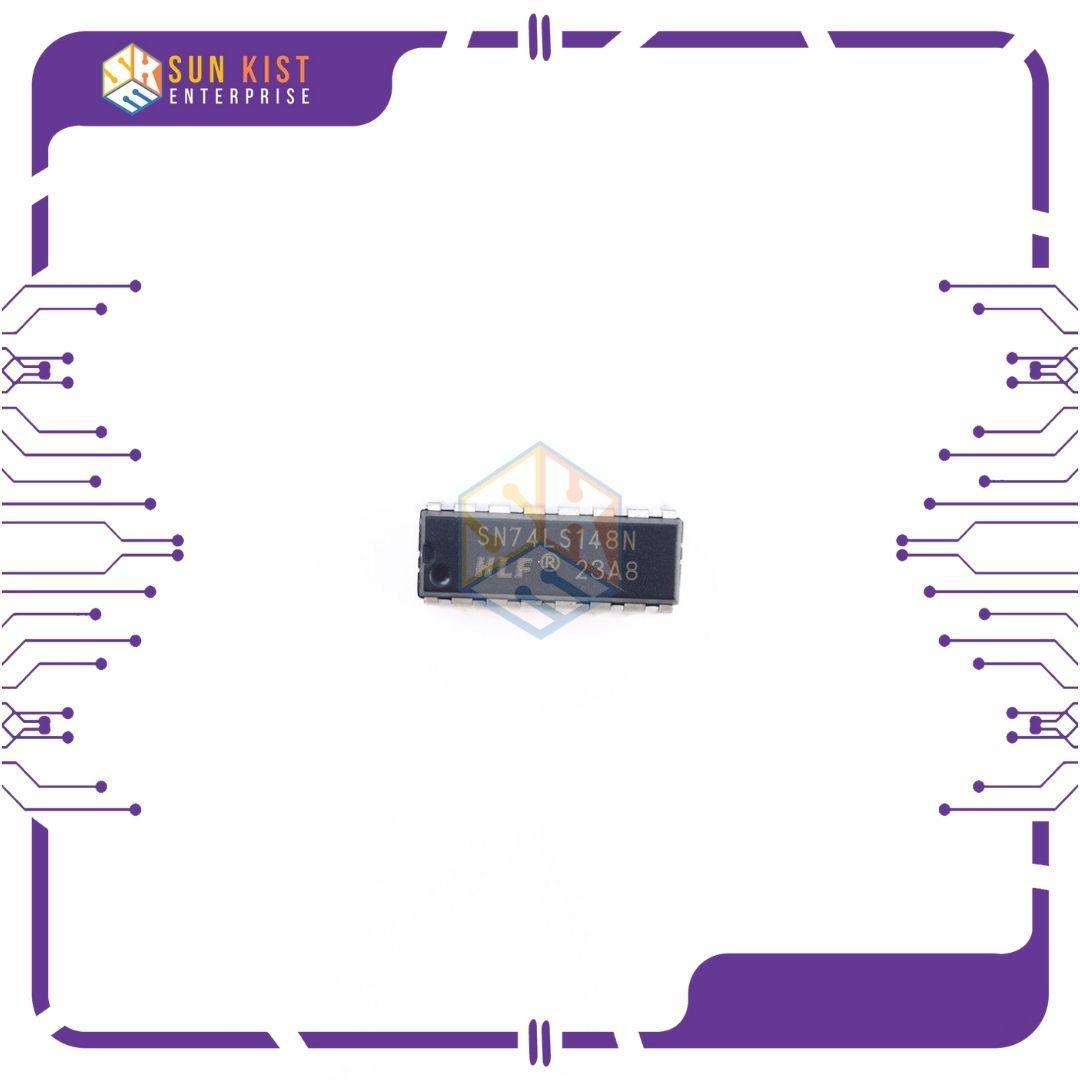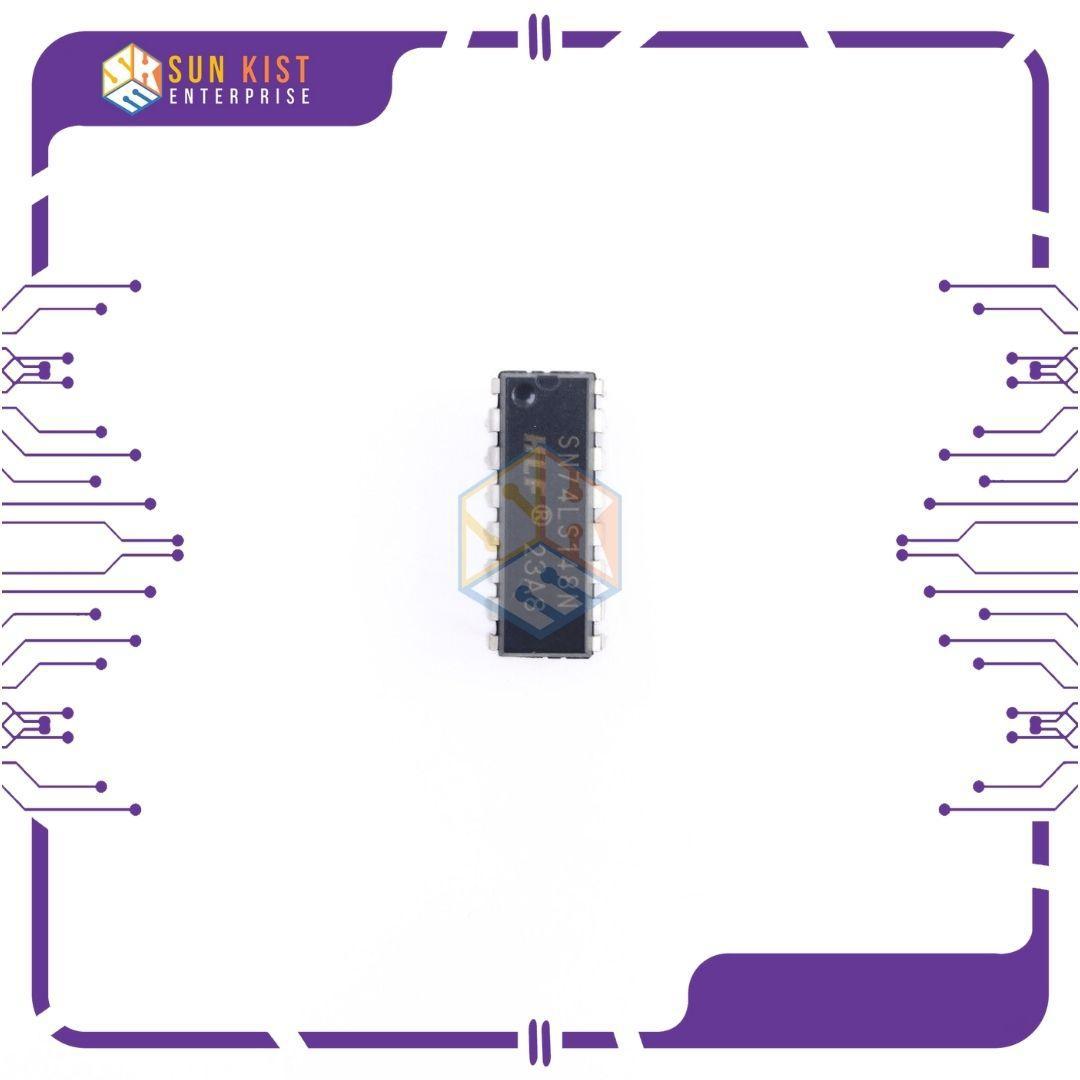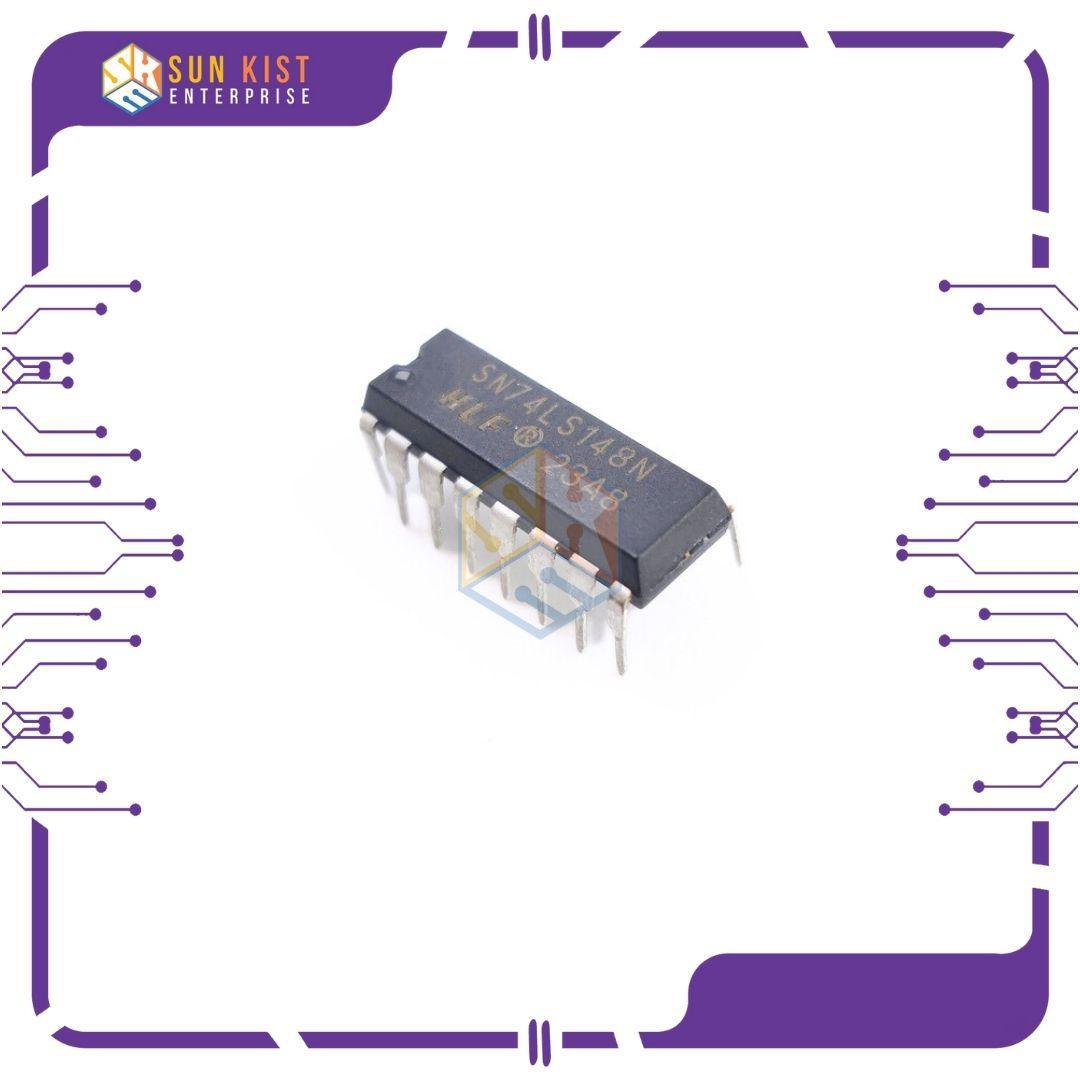Description
The 74LS148 is a commonly used integrated circuit (IC) that belongs to the TTL (Transistor-Transistor Logic) family. It is a 8-to-3 line priority encoder, which means it is designed to encode eight active-low inputs into a 3-bit binary output. Here are some key features and details about the 74LS148 IC:
1. **Functionality:**
– The 74LS148 is a priority encoder, and it assigns priority to the input lines based on their numerical value. The input with the highest numerical value has the highest priority.
2. **Inputs:**
– The IC has eight inputs (A0 to A7) that are typically labeled as D0 to D7, where D0 is the least significant bit (LSB), and D7 is the most significant bit (MSB).
3. **Outputs:**
– The IC has three binary outputs (Y0, Y1, and Y2) that represent the binary code of the highest priority active input.
4. **Active-Low Inputs:**
– The inputs are active-low, meaning a low voltage level (logic 0) on an input represents an active condition.
5. **Priority Encoding:**
– The 74LS148 encodes the highest priority active input into a 3-bit binary output. The output bits represent the position of the active input in binary form.
6. **Enable Inputs:**
– The IC may include enable inputs (G1 and G2) that control the operation of the encoder. When these inputs are active, the encoder is enabled.
7. **Cascade Capability:**
– The 74LS148 has a cascade input (Cn) that allows multiple 74LS148 ICs to be cascaded for encoding more than eight inputs.
8. **Truth Table:**
– The truth table of the 74LS148 specifies the binary output corresponding to the active input.
9. **Supply Voltage:**
– The typical supply voltage for the 74LS148 is 5V.
10. **Package:**
– The IC is available in a dual in-line package (DIP), which is a common through-hole package used in electronic circuits.
The 74LS148 is widely used in digital electronics for applications where priority encoding is required, such as in microprocessor systems and other digital systems where multiple inputs need to be encoded into a smaller set of outputs. As with any IC, it is important to refer to the datasheet for detailed information, including electrical characteristics, pinout, and recommended operating conditions.










